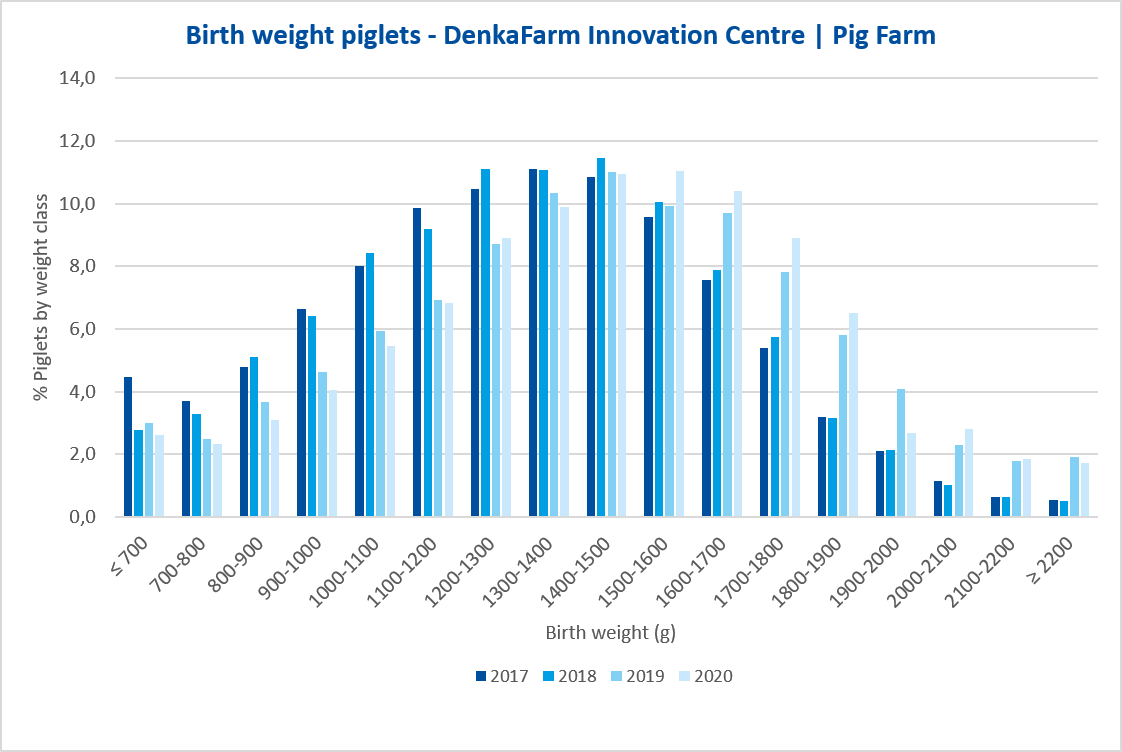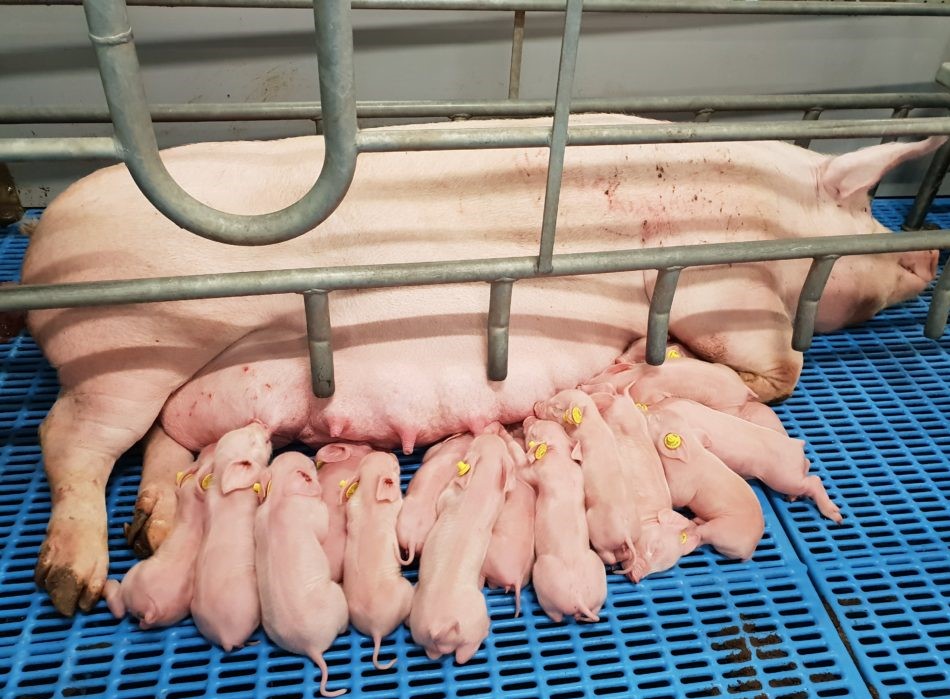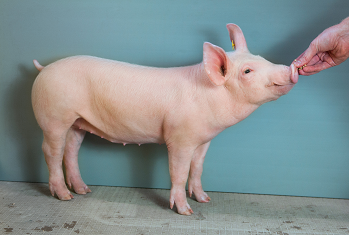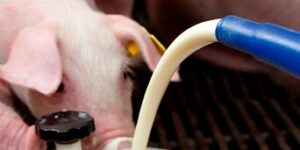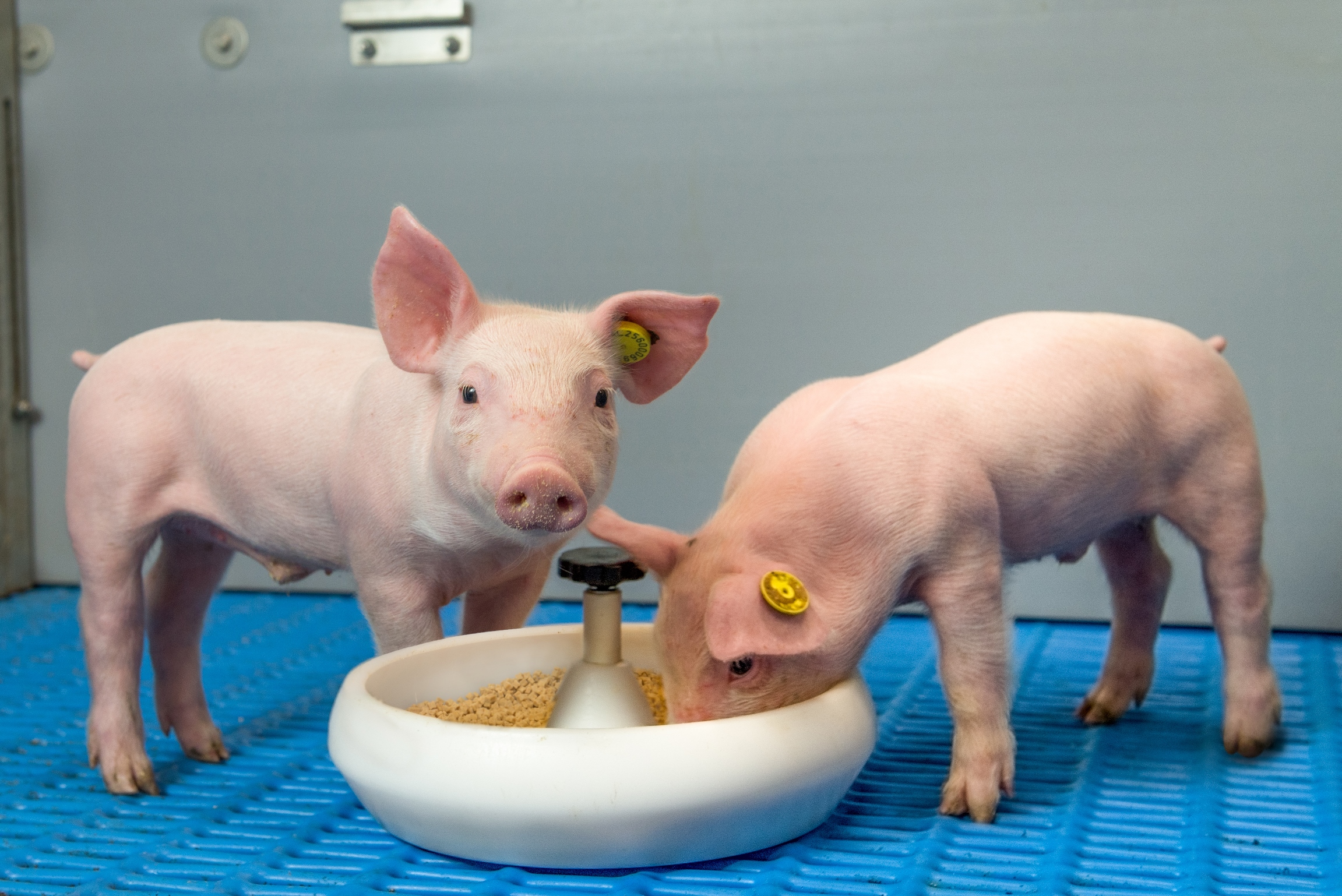Feeding sows and care for piglets, crucial elements for survival
By Jos Thelosen, Varkens.nl
Sows that are at the desired weight at the first insemination and continue to develop according to schedule, also in the subsequent cycles, produce the most vital piglets and uniform litters. Providing extra minerals and vitamins through the sow feed around farrowing results in half a piglet being born alive. Allowing young piglets to get used to the intake of dry feed with a tasty product at an early stage helps to promote good intestinal function.
Weaned piglets per litter
The number of piglets born per litter is an important indicator of production on a sow farm. The need to wean and deliver all those piglets born has increased in recent years. In 2020, between sixteen and seventeen piglets per litter will be born at the Pig Farm, Denkavit’s research centre. The trend is that fewer light piglets weighing less than a kilo have been born over the years. The weight of the piglets significantly improves piglet survival.
At least 170 kilos
According to Denkavit, one of the success factors is the attention paid to the nutrition of the sows. The best results are achieved in gilts that are inseminated for the first time in their lives when they weigh at least 170 kg. During the pregnancy phase, they should be fed in such a way that they gain at least 70 kilograms of body weight. Also in the following cycles, sows must be able to grow at least 50 kilos in gestation. This requires a good feeding strategy that is regularly checked based on animal weighing and, if necessary, adjusting the feed amount. At the Pig Farm, this results in average birth weight of 1.483 grams and uniform litters. Less than 9.5 per cent of piglets weigh less than 1,000 grams at birth.
Smoother birth process
To give the born piglets extra vitality and a better chance of survival in addition to a good weight, the specialist in young animal nutrition has developed Vitality. This feed additive for pregnant sows contains various vitamins, minerals and trace elements. Feeding the sow 75 grams of Vitalvit daily from five days before farrowing until five days after, will make the birthing process smoother and stimulate colostrum and milk production. The smoother farrowing reduces the number of stillborn piglets. This is proven by practical tests at two large sow farms. The pig farmers on both farms work with a different high-yielding sow breed. These trials show that about half a piglet per litter extra survives during the birth process if sows have been given the top dressing around farrowing. This difference is the result of data from a total of 2,300 litters from sows on Vitalvit and more than 2,650 litters from control sows.
It better start to life
In addition, the extra colostrum and milk production ensure a better start to life for the piglets born with more vitality and higher growth. This makes it a lot easier for Vitalvit to wean more piglets on 26 days that weigh an average of 8 kilos each, Denkavit reports. A good start has been made with giving birth to more vital piglets and having good colostrum production in the sows. But there is more work to be done for the sow farmer. After the colostrum phase and the best possible distribution of the colostrum among the piglets, it is best to start preparing for weaning immediately.
Problem solver
“The rapid addition of, for example, artificial milk does not suit every company. In addition, young piglets are sensitive and problems can lie in wait,” says Ard van Enckevort, manager of R&D at Denkavit. “Of course, we want to stay ahead of that. With Vitalsafe we have developed a product with which we support the vitality and contribute to a good intestinal function of piglets.’ The various ingredients in Vitalsafe are all aimed at supporting the vitality of the piglets. The product contains various ingredients of natural origin that contribute to good intestinal function in a wide area.
Stimulate the immune system
“Algae not only have an attractive taste, but they also help to stimulate the immune system. Our ingredient Progres, a product from coniferous trees, supports the intestinal wall. The fatty acids and a standardized amount of free resin acids have an anti-inflammatory effect,” explains Van Enckevort. “Vitalsafe is dissolved in water and given in feeding bowls to piglets from two to three days old up to eight days of age.”
Piglet survival increases
Piglet survival at Denkavit’s Pig Farm has increased significantly in recent years. More than 87 per cent of all live piglets born in 2020 survived the first ten weeks after birth. In 2019, the survival rate of live-born piglets was still 82 per cent. One of the success factors is feeding sows with higher weights and more uniform litter at birth. Pig Farm’s weight distribution proves that. Last year, a newborn piglet weighed an average of 1,483 grams and less than 9.5 per cent of the piglets were lighter than 1,000 grams at birth.
